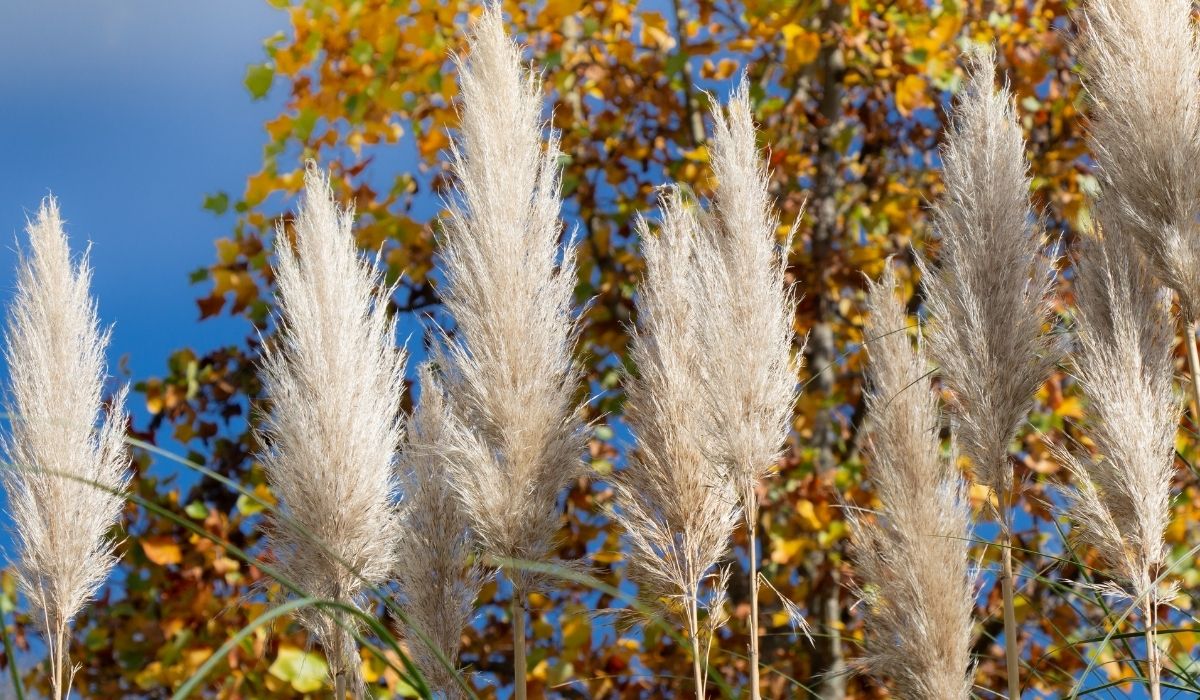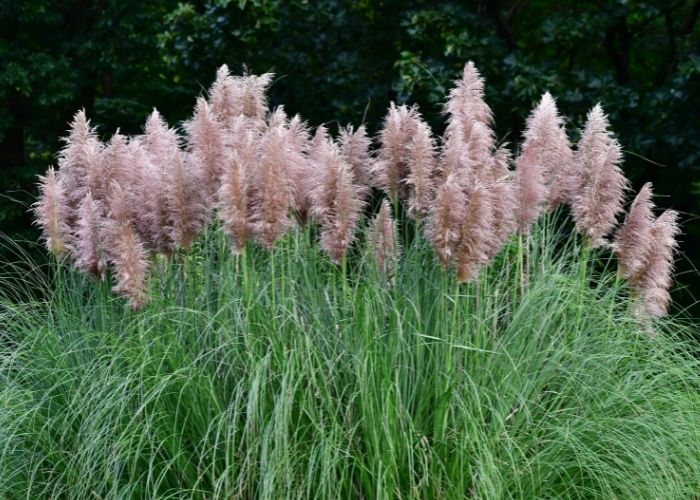Last Updated on April 8, 2022 by Fabiola L.
Before growing it, gardeners should know the purple pampas grass zone; check with your local extension officer about any restrictions.
Purple pampas grass is a tall and graceful perennial that adds dramatic beauty and privacy to your garden landscape. Despite its name, it’s not precisely purple because it is also known as pink pampas grass, and its color can vary. The purple pampas plants have green leaves and colored plumes.
Maybe you have seen photos of purple pampas grass manipulated to make the plant look a particular shade of magenta, lavender, or purple in some pictures or catalogs. Depending on how special you are about the color palette in your garden, you should expect the color of this grass to be closer to a sort of pinkish mauve or a pink tint ivory color.
Facts About Purple Pampas Grass And Its Zone
- Pampas grass purple does not only come in species of selloana. You can get it in other varieties, including the Cortaderia jubata, also referred to as Andean pampas grass or purple pampas grass.
- It can grow up to 22 ft. tall, one of the tallest varieties you can get of pampas grass.
- Its purplish and pinkish flower plumes make this grass stand out.
- The purple flower plumes turn to a white and ivory color when the plant matures.
- The purple pampas grass cultivars are female plants.
- This grass is classified as an invasive weed on the US west coast and Hawaiian Islands in the USDA growing zones 6 to 10.
- It is easy for this grass to overwhelm small spaces or garden beds, so be watchful where you plant it.
- It is recommended to grow these purple pampas grass only if you have plenty of spaces for it to spread.
- This grass is not very cold hardy; it survives in zone 6 with winter protection.
- You can grow this grass as an annual in colder areas without worrying about it being invasive.
Growing Purple Pampas Grass As The Landscape In Your Zone
Purple pampas grass is very imposing with its tall fronts, and soft tops wave in the breeze making the view look adorable. If you have a large area planting purple grass as a divider or privacy hedge is a good idea.
This grass can be easily moved around to make a good specimen landscape to Mark spaces in a large loan. The grassy clump can be cut back to the ground level in late fall to make way for new spring growth or left all winter if desired. It is recommended to cut back your purple pampas grass in late winter or early spring before new growth forms.
The Invasive Nature Of Pampas Grass
If you live in a zone where this plant is Hardy – USDA growing zones 6 and above, beware. This plant not only spreads by the root systems getting larger but also propagates by seed. This plant produces millions of seeds by year dispersed by wind water or transport. This means it can be highly invasive, and once established, it is difficult to eliminate, as the root system is very thick and tough.
Besides its invasive nature, this grass has sharp edges that can make cutting or moving it out somewhat dangerous.
In some cases, the flower that grows from the grass at the end of its growing season causes respiratory distress, especially in densely populated areas. It is therefore essential to consider whether to plant purple pampas grass where you live.
Learn more about Amazing Tips On How Short To Cut Grass Before Overseeding
Purple Pampas Grass Growing Conditions
Once you understand all the considerations of this invasive grass and decide to plant it, it is essential to know the required growing conditions to thrive. This grass prefers our rich, well-drained soil but tolerates clay and rocky soils.
It also requires a decent amount of moisture but can be drought tolerant. It’s also tolerant of salt, meaning it can flourish in coastal areas and by roadsides, we are many others all sensitive grass cannot survive.
This grass prefers full sun, but it can also do well under partial shade. It does not need any fertilizer; like many invasive plants, it’s very high immune to pests and diseases.
Like an invasive plant, Pampas grass doesn’t have any natural predators or common disease problems, allowing it to spread more aggressively and quickly.
Therefore, to avoid the aggressive spread of this invasive grass, grow it only in zones where it is not hardy. Always cut back the inflorescences before they seed. Or keep dividing and removing the aggressive roots.
Where Should You Plant Your Purple Pampas Grass?
Now that you know all about the purple pampas grass, you have the opportunity to plant it in different areas around your home.
You can plant pampas grass directly in the ground or containers; whatever area you choose, you must plant it away from any areas where children or pets access unsupervised. This is because pampas grass has sharp edges that can cut skin. Also, plant this grass where you don’t light fires as it is known to be highly flammable. For maximum safety, plant this grass away from homes and buildings, especially if you live in areas where there is a risk of wildfires.
Plant your pampas grass in a suitable area with loamy and sandy soil if you plan to grow any taller variety and wish to use it as a windbreaker—plant taller varieties 6 ft apart and as deep.
Did you know you can plant pampas grass in containers? Use large containers to plant dwarf varieties of pampas grass and keep them in a suitable location. This prevents pampas grass from spreading and growing invasively.
Growing pampas grass in containers is an excellent option if you want to grow it in colder climates, as these containers can be moved indoors during the cold season. Take note that the dwarf varieties are sterile, which means they do not reproduce through seeds. This makes them an excellent option for growing pampas grass.
Conclusion
Purple pampas grass helps you to break away from the ordinary green color. While the stems remain green, the plumes for pampas grass colors can range from silver to White to sand pink to purple etc. Purple pampas grass is one of the favorite commonly grown colored grass. Why not try it out?
Caroline is a gardener who loves to get down to the nitty–gritty of gardening. She proudly proclaims herself as a ‘dirt worshipper‘ and can often be found deep in the garden, covered in soil and singing to her plants. As a self–proclaimed ‘plant whisperer‘, Caroline believes that plants need love and attention just like any other living thing, and she loves to give them both. When she‘s not tending to her garden, you can often find her researching the latest gardening trends, or teaching others how to make their gardens thrive




